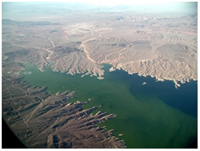
The Use of Water Quality Models for Optimizing Hydraulic Structures
Imad A. Hannoun, PhD, PE Thursday, October 2, 2014
Principal Consultant, Water Quality Solutions Inc. 3:30pm – 4:30pm
138 DeBartolo

Historically, the design of hydraulic structures such as dams and water intake and discharge structures has been optimized to minimize their cost and hydraulic performance, with limited consideration to water quality and environmental concerns. With the advent of fast computers and sophisticated software, the design of hydraulic structures can be readily optimized to enhance water quality. Some real life example will be discussed, including the optimization of a nearly 1 billion dollar new drinking water intake from Lake Mead near Hoover Dam, Nevada that will serve the greater Las Vegas area.
Dr. Hannoun is Principal Consultant at WQS. He received a Ph.D in Civil and Environmental Engineering from Caltech in 1987. Since then, he has provided technical analysis for over 150 projects, mainly through the application of complex 3D water quality models for clients including the City of San Diego and the U.S. Navy. He has authored reports and papers in the following areas: dispersion and mixing in rivers, lake and reservoir hydro-dynamics and water quality, computational fluid dynamics, eutrophication and nutrients, and underwater missile launch. He was the primary author of one of the first articles on CFD modeling in the water industry.